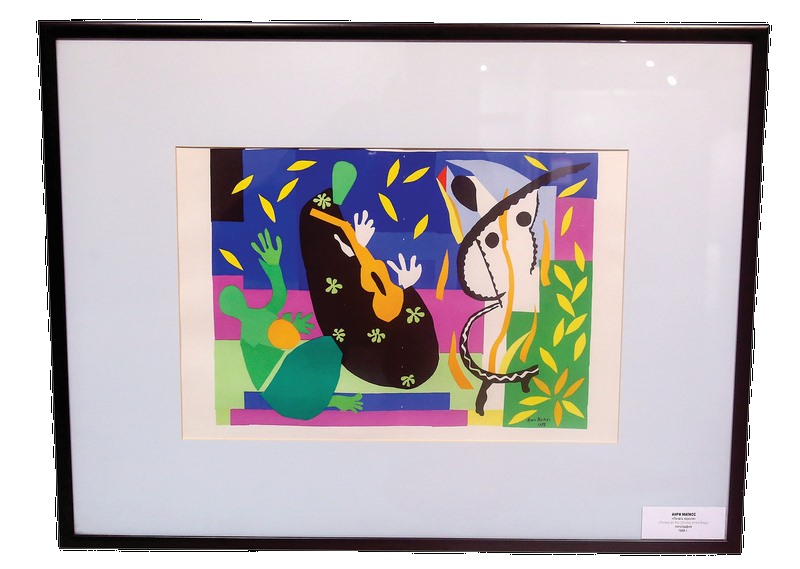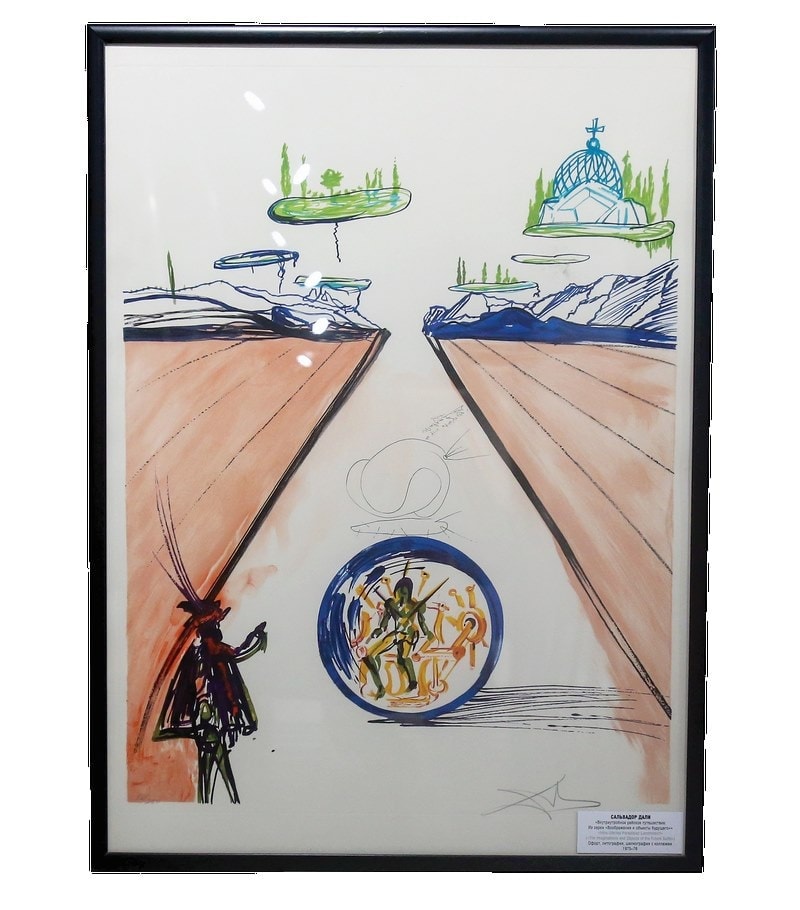Today, visitors can see 229 works at the House of Paintings, including Marc Chagall’s biblical-themed works, colourful prints by Salvador Dalí, and images from Dante’s Divine Comedy. Larisa Bortnik, the Director of the Gallery, notes that Henri Matisse’s collage works are among the most popular at the exhibition. At the end of his life, the artist could no longer hold a brush, so began cutting figures from coloured paper.

At the exhibition in the House of Paintings
Each work has its own space, so that none encroaches on another, and there is adequate room for commentary. Meanwhile, installations cover the floor: melting watches akin to those of Dali; Matisse-style fish; and soaring lovers, who appear from Chagall’s pictures. Citations from the ‘Secret Life of Salvador’ can be seen throughout the exhibition.
The exhibition comprises four sections; two (having 229 works) are already exhibited. The first, featuring works by Chagall, Matisse and Dalí, lasted just a month, while the second runs until the end of 2015, also featuring works by Chagall and Dalí. The other two sections will arrive in Belarus next year, including pieces by Kandinsky, Picasso and Miró.

Dalí once said that it was ridiculous to paint an apple as it is. However, why not hang fruit from the ceiling! Besides his works from the early 1950s, on show are 100 ‘Songs’ by Dante, gathered in Minsk for the first time.
A century ago, Chagall (who was from Vitebsk) painted ‘a window to Paris’. Works by the great avant-garde artist will be in Minsk for 100 days, until Matisse’s birthday. The great Fauvist will leave the House of Paintings earlier, so be careful not to miss out.

Ms. Bortnik notes, “Matisse’s exhibition introduces elegant, graceful female figures, ingenious in their simplicity. Until now, I’ve only seen his works on calendars; today, I’m seeing them with my own eyes. As an art historian, this means a great deal. They’re creating such an unexpected impact on me, being naïve yet full of bathos, and skilfully constructed.”
Negotiations for the exhibition were simpler than might have been expected, as the show is touring various countries and cities. “We only needed to agree on when the exhibition would arrive in Minsk,” Ms. Bortnik explains.

Author — H. Matisse
The annual insurance for such an collection is $1 million, and rent for a month costs about $10,000. “When we speak about art, we tend not to mention the financial side. The focus is on aesthetics and enjoyment, so the cost seems irrelevant,” reflects Ms. Bortnik.
Hundreds of books and thousands of articles have been written about each of the featured artists, as well as many feature and documentary films. Each has their own dedicated museum, being legends of the highest order. Minsk enjoys few such exhibitions.

Author — S. Dali
Naturally, those who own priceless works of art rarely allow their treasures to appear at private galleries, fearing for their safety, including during transportation. However, Russia currently has three similar collections, owned by Russian businessmen.
The current Minsk show arrived from Irkutsk, having previously been in New York. The works are touring Russia, and originally appeared in their entirety, in one place, being exhibited for three months. Negotiations to receive the works took six months; two parts have been achieved, with the third due to arrive soon, including the most valuable works by Chagall and Dalí.

Author — M. Chagall
The fourth section, featuring works by Picasso, Kandinsky and Miró is due to arrive at the House of Paintings in late 2016. An ironclad agreement has now been signed. Naturally, costs involved differ for each section.
Minsk residents have seen works by Marc Chagall and Salvador Dalí before but never in such volumes. The most valuable items are Henri Matisse’s collages, which are the only examples, without copy. Lithographs and xylographs can be reproduced effectively (if the original blocks, zinc sheets and wood are still intact) and can be thought of as appearing as the artist originally intended, but who else can cut a paper figure but the original master? His hand must have held the card and the glue. Created between 1948 and 1954, when he became wheelchair-bound, Matisse sought to express himself through bright paper, scissors and glue, producing works stunning in their visual simplicity. These pieces, which now hang in Minsk, are considered to be his best works. To miss them would be a tragedy.
By Veniamin Mikheev























